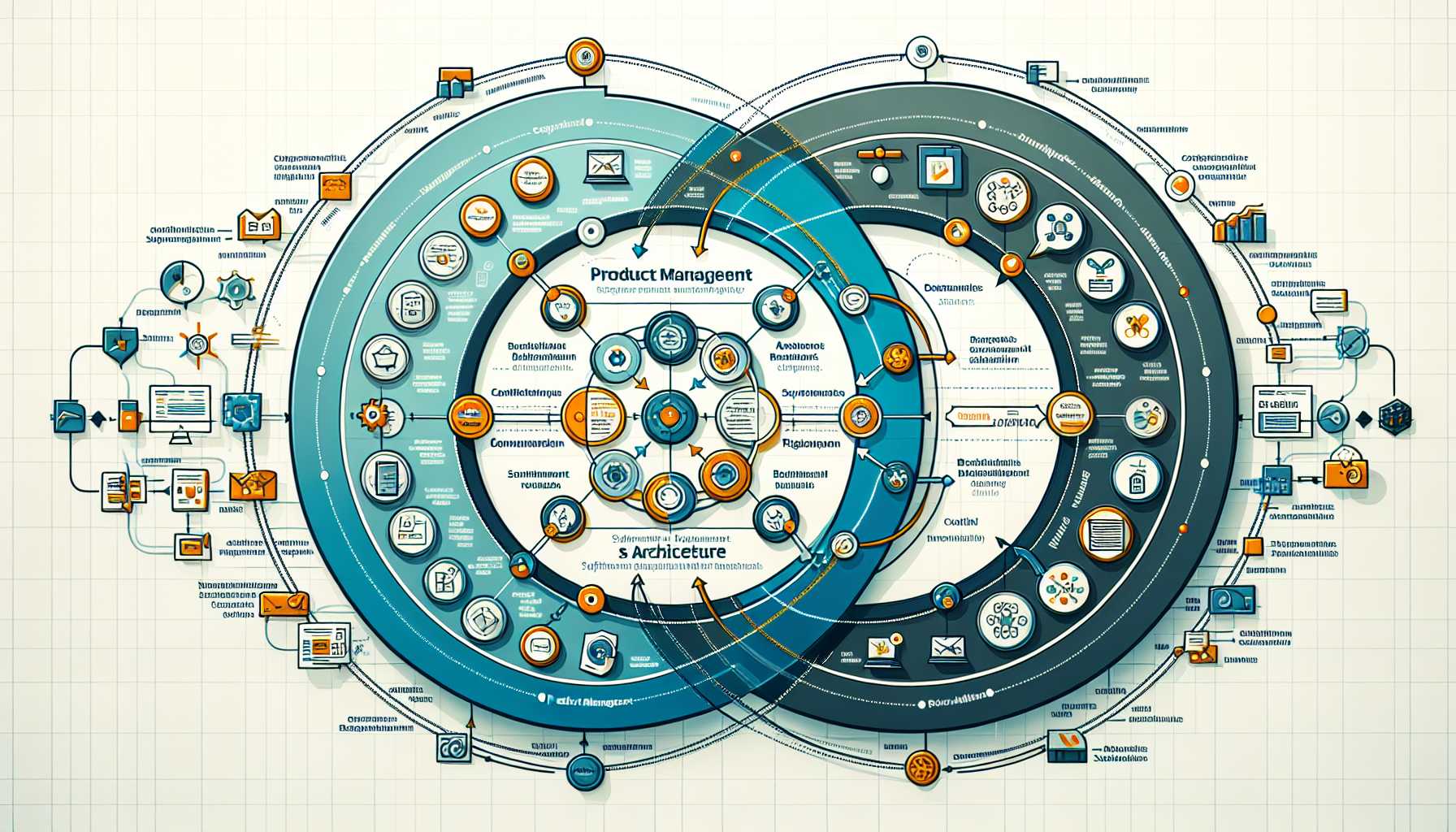Welcome to a deep dive into the fusion of product management and software architecture. In my tenure as a product leader, I’ve experienced firsthand the impact that strategic involvement in architectural decisions can have on both the product’s evolution and the organization’s agility. Here, I’ll dissect how a product manager can influence these decisions to align with the product vision, drive innovation, and ultimately deliver delightful customer experiences.

Understanding the Interplay
Product management and software architecture are often seen as distinct disciplines, each with its domain of expertise. However, software architecture inherently serves as the blueprint for product development; thus, it is critical for product managers to engage with architectural decisions—a topic I learned the importance of during the early stages of my product career at a SaaS startup.
The Role of the PM
As the primary advocate for the product’s success, a product manager ensures that customer needs, business objectives, and technical possibilities are well-aligned. While not diving deep into the codebase, PMs must understand the high-level architecture to appreciate its flexibility, scalability, and performance implications.
Strategies for Influencing Architectural Decisions
I’ve refined a set of strategies that enabled me to play an influential role in architectural decisions, without overstepping into the realms of technical dogma.
Embedding the Product Vision
Architectural decisions should be consistent with the product vision. Sharing the product roadmap, emphasizing long-term goals, and illustrating how architecture can be an enabler for upcoming features has often helped me guide technical teams towards making foresighted choices.
Fostering Cross-functional Collaboration
Facilitating conversations between engineers, designers, and stakeholders can uncover architectural needs that might otherwise be overlooked. Holding workshops and brainstorming sessions, a technique I employed often, bridges gaps between teams and fosters a holistic approach to architecture.
Customer-Centric Advocacy
Representing the voice of the customer, PMs can shape architectural decisions by highlighting user stories and scenarios that demand a robust, scalable, and flexible architecture. In a project I led, emphasizing on customer feedback made a convincing case for adopting a microservices architecture to improve scalability.
Championing Technical Excellence
Business viability and technical excellence are not mutually exclusive. PMs should advocate for architectural decisions that not only meet immediate requirements but also set a foundation for high-quality, maintainable, and secure software. During my time with a fintech firm, advocating for a shift from a monolith to microservices to bolster security postures under regulatory compliance was a defining moment.
The Implications of Architectural Decisions
Architectural decisions have ripple effects across the product lifecycle. Reflecting on past experiences, here’s how I’ve seen this play out.
Product Scalability
The choice between monolithic and distributed architectures can make or break a product’s ability to scale. By championing modular architectures in my projects, I’ve enabled the product to evolve without being bottlenecked by its underpinning technology.
Time to Market
Architectural complexity can delay release cycles. My involvement in decision-making has often been instrumental in selecting architectures that balance technical sophistication with agile delivery, thus reducing time to market.
Cost Implications
A robust architecture can mean higher upfront costs but results in lower operational expenses in the long run. My experience at an e-commerce platform demonstrated how investing in a scalable cloud architecture optimized for performance, despite the initial cost, reduced the total cost of ownership over time.
Technical Debt
Limiting technical debt is a strategic responsibility. Encouraging the adoption of modern practices like containerization and serverless computing has been key in my past roles to reduce technical debt and increase the longevity of the product.
Framework for PMs to Influence Architectural Decisions
A structured approach always aids in bringing clarity to complex scenarios. Here’s a framework I’ve successfully applied:
1. Establish Clear Communication Channels
Ensure continuous dialogue with technical leads to stay abreast of architectural trends and challenges.
2. Use Data-Driven Arguments
Base your case on market research, competitive analysis, and ROI calculations to make informed contributions to architectural discussions.
3. Encourage Prototypes and PoCs
Support the creation of proofs of concept to assess the viability of different architectural approaches in real-world scenarios.
4. Prioritize Non-Functional Requirements (NFRs)
NFRs such as security, maintainability, and performance often shape the architectural landscape. Prioritizing these from a product standpoint is crucial.
5. Strive for Continuous Learning
Stay educated about architectural patterns and their impact on products. Attending seminars, webinars, and workshops contributes to making informed suggestions.
Conclusion
Product managers can and should influence architectural decisions by viewing them through the lens of product strategy and business goals. Through proactive engagement, visionary leadership, and collaborative spirit, we can steer our technical counterparts towards architectural choices that align with top-notch customer experiences, sustainable product evolution, and overarching business success.
Reflecting on my experiences convinces me that the ability of a PM to navigate these waters adeptly is a powerful advantage in the competitive landscape of technology products. Undoubtedly, this symbiosis of roles can lead to a stronger, more resilient, and successful product life cycle.
